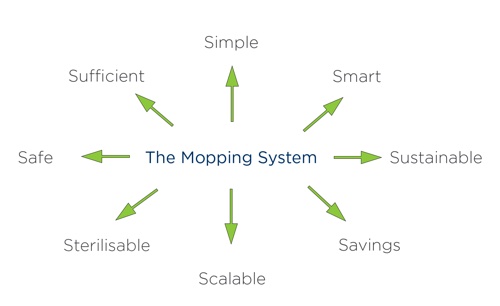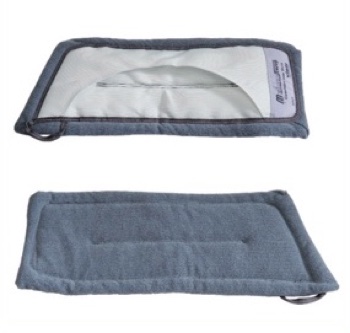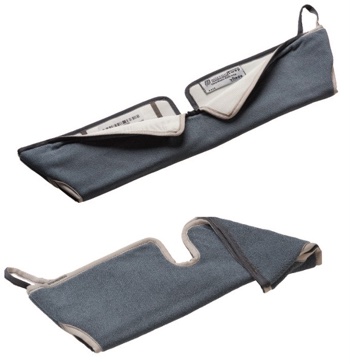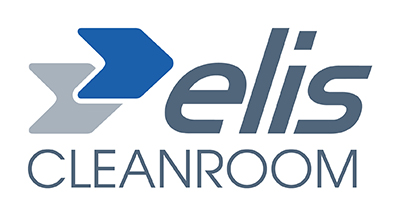Effective cleaning and full contamination control are key to a functional and efficient cleanroom. As easy as it sounds, this is a challenging task, where many details need to be taken into account, especially when choosing a mopping system.
Within any facility, different areas require different cleaning strategies. It is already challenging to clean contamination that cannot be seen, and the operators having the constriction of performing their tasks fully gowned further increases the level of difficulty. In addition, manual cleaning processes can prove difficult to standardise and validate. However, through training, pragmatic, logical and understandable procedures in combination with effective, ergonomically designed equipment the high demands for cleanroom cleaning can be met.
GMP compliance
In several guidelines, such as ISO 14644, IEST RP CC018 and life science GMPs, there are specifications around the cleaning tools and processes. In general all cleaning systems, including mop heads, must not be a source of particles and microorganisms themselves. They should be sterile or sterilisable, easy to clean and resistant to the common cleaning and disinfecting agents.
In summary, the mopping systems and all components must meet the respective purity requirements, must not adversely affect the production process and the products produced and must offer a high degree of effectiveness and process reliability with respect to the activity.for mopping systems
Table 1: Excerpt from VDI 2083 – page 9.2, table 23
| Requirements for mopping systems | Cleanroom class specific | Process specific | Others |
| Abrasion resistance | Yes | ||
| Cleaning efficiency | Yes | ||
| Liquid absorbency rate | Yes | ||
| Resistance against cleaning detergent (incl. disinfection) | Yes | ||
| Extractable residues | Yes | ||
| Decontamination (cleanliness) and durability | Yes | ||
| Release of substance, gas, vapour | Yes | ||
| Floor coverage | Yes | ||
| Composition, handling, risk for cross contamination | Yes | ||
| Ability for sterilisation | Yes |
Each facility should have its own written standard operating procedures (SOPs) and checklists for different cleaning frequencies based on cleanroom air class (by shift, daily, weekly, etc.).
The cleaning SOP is a valuable document that describes the procedures for mops and all the accessories (frame, handle, trolley). The SOP gives guidance for maintaining the cleanroom with a clear point of reference and prevents errors and mistakes. Thorough and consistent training is import to prevent misinterpretation and cleaning failure. This is crucial because no matter what the industry, cleanroom cleaning is often done through specialised operators and in-house teams, or through an outside cleaning service. The SOP ensures a proper and standardised cleaning system can be adhered to achieve the highest contamination control.
Mopping system considerations
The global cleanroom mopping market, like the reusable garments market, is no longer dominated by the use of disposables. Previously promoted to be easy to use in a pre-impregnated version to meet the highest cleanroom standards, disposables can prove costly. In recent years, due to innovation in microfibre textile materials, it has become increasingly common to opt for a reusable flat mop in place of the more common string mops.
The reusable mops and accessories for cleanroom cleaning should be compatible and fit together for their respective applications. Therefore, when defining a cleaning procedure, take into account that simplicity and efficiency are essential and there is no “one size (mop) fits all”.
Take into consideration that the mopping system should be:

Simple — Self-explanatory and easy to operate. The methods for wetting/dosing should be simple for small or large scale cleaning, whether using bucket systems or the pre-prepared method. Mops should also be lightweight; a mop that is too heavy for an operator results in poor ergonomics, bad technique and missed areas.
Sufficient — The mop design and material construction in combination with the cleaning method should guarantee the contact time and floor coverage (e.g. 15–20 m2). The microfibre mops must be suitable for use in cleanrooms, high mechanical cleaning action, resistant to chemicals and disinfectants and have a defined liquid absorption.
Surface unspecific and scalable — Sizes and types of mop should be suitable for all surfaces: floor, walls and ceilings. The complete system should work in small labs as well as large cleanrooms.
Sustainable — The mop material and design needs to offer a long laundry and re-use lifecycle, thus minimising waste disposal, making it an environmental-friendly and safe solution.
Smart — The UHF microchipping ensures full overview of the quantity of mops used and the number of mops in circulation (traceability). Savings — With reusable mops inventories, traffic, cleaning time and chemical usage can all be minimised.
Sterilisable — Suitable for GMP Classes A/B, enabling the mops to go through autoclaving or gamma irradiation.
Safe — The work process should be contactless (touchless) to avoid cross contamination. This guarantees a mopping disinfection process that can be reproduced and validated. In addition, it is important that the entire work flow can be completed without touching the mop head/cover. That is the reason why the majority of cleaning trolleys have an automatic opening mechanism for the mop frame.

Fig. 3: MicronSwep single-sided flat mop

Fig. 4: MicronSwep double-sided flat mop
Flat mops: single vs double-sided
Besides the reusable single-sided mop heads (Fig. 3), which are well established and in pharmaceutical markets, the double-sided mop, DUO, is at the forefront of the next generation of mop heads (Fig. 4). Easy to use, ergonomic and a more cost-effective, compared with single-sided flat mops, the advantages of a DUO are:
- Up to 100% more floor coverage
- Up to 50% fewer mop changes
- Superior cleaning performance
- Quick, easy and touch-free mop flipping
- Minimised particle retention due to rounded open side-corners
- Indication band on the frame for right side use (avoiding cross-contamination)
- Decrease in costs by reducing the number of mops in circulation
- Decrease in packaging materials for the mop (environmental-friendly)
- Reduction of cleaning time (up to 50%)
- Saves chemical/disinfectant via good absorbing performance and liquid release (contact time) compared to traditional double/triple bucket systems
- Reduces storage space compared with disposable mops
- Transparent packaging is recommended for quick and clear identification of the product
- Packaging and boxes for transport should be resistant to disinfecting materials
- When opening the packaging/foil the mop should be protected from coming into contact with particles as much as possible
- Crosscheck to see if double sterile packing is necessary
Decontamination and packaging
Mops should be processed in the respective cleanroom class that they are used in. The key to a successful decontamination and sterilisation process is the age of a mop head/cover and the extent of its usage. Similar to garments, our recommendation for the number of uses is 50-60 cycles for sterile use and 70-80 cycles for non-sterile decontamination. In addition, the roughness of flooring and the type of contaminant need to be taken into account as that could lower the lifecycle/durability of the mop. The fibre structure could be damaged and, as a result, the performance of the mop will decrease (lower liquid absorbance rate leads to more usage of mops, etc.)
The shipping details (packaging) can be defined and clearly described and agreed by the customer and the laundry partner. The following points should be considered:





